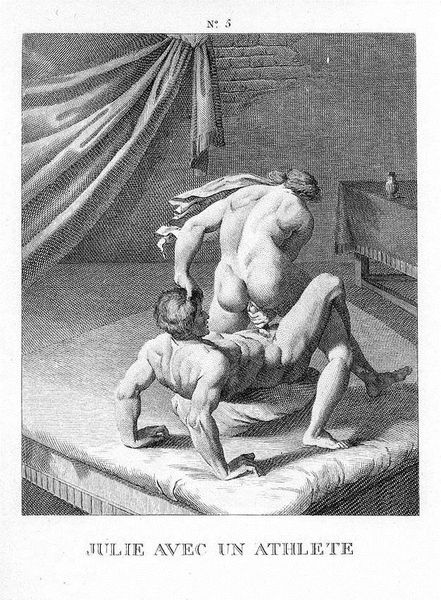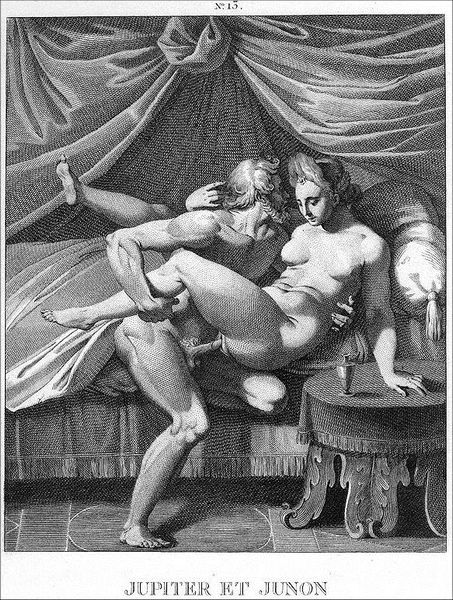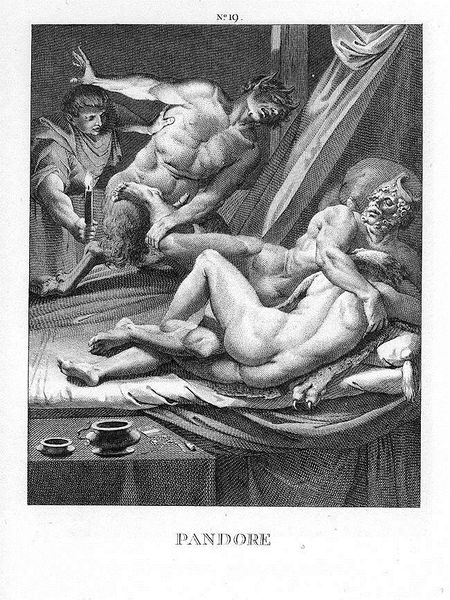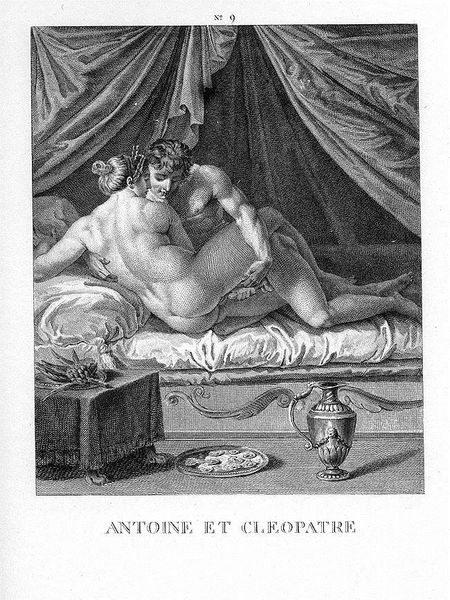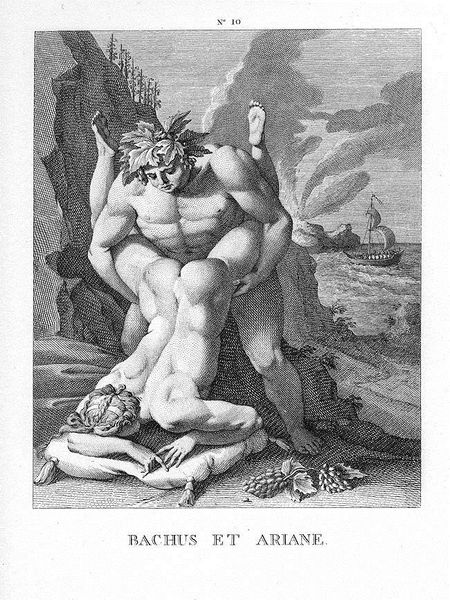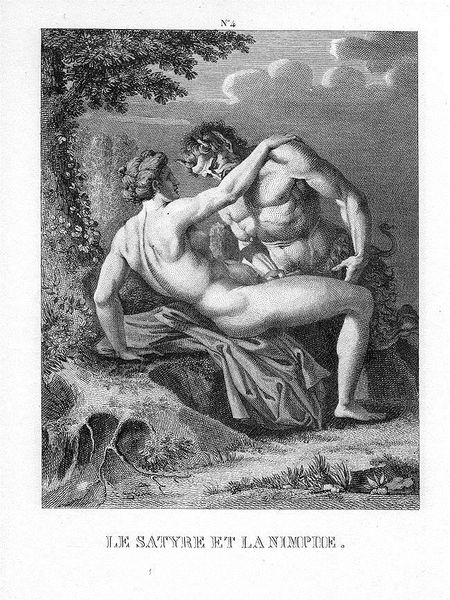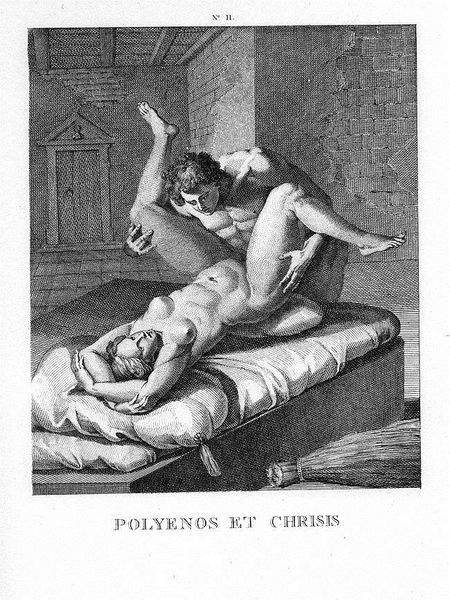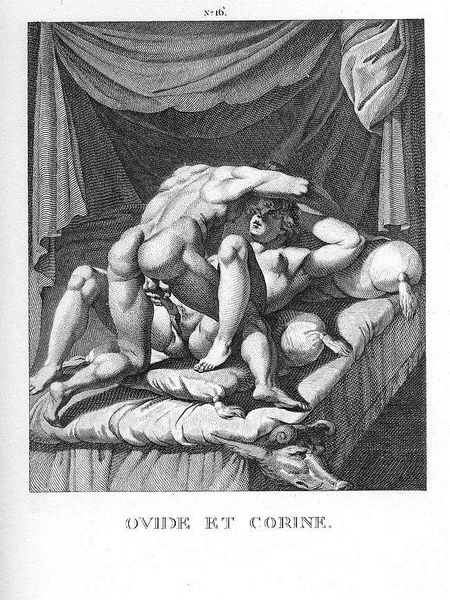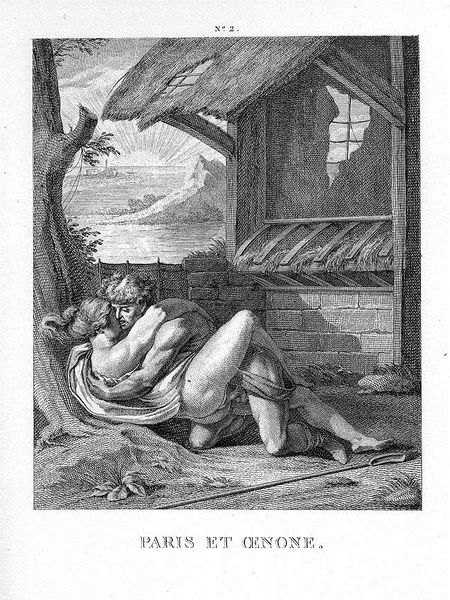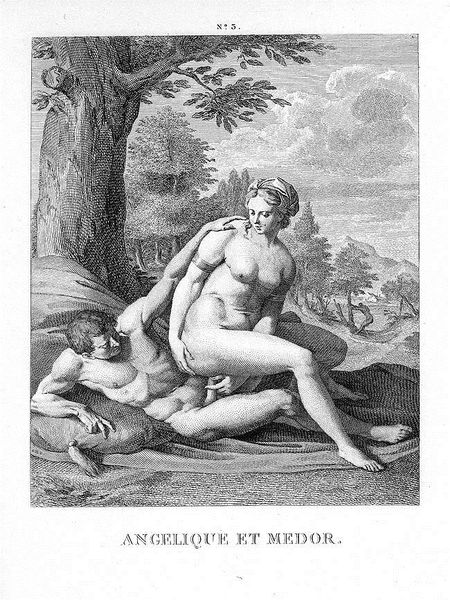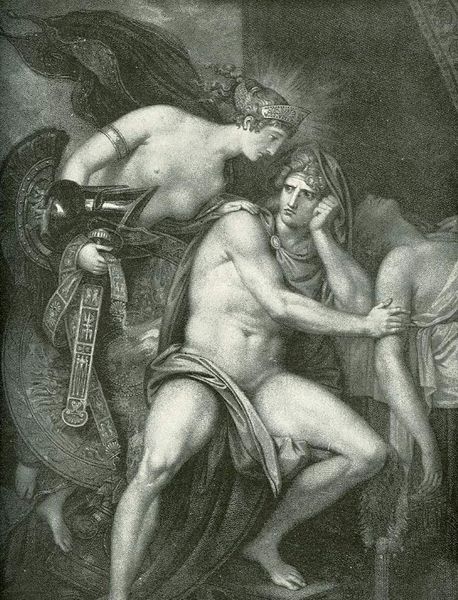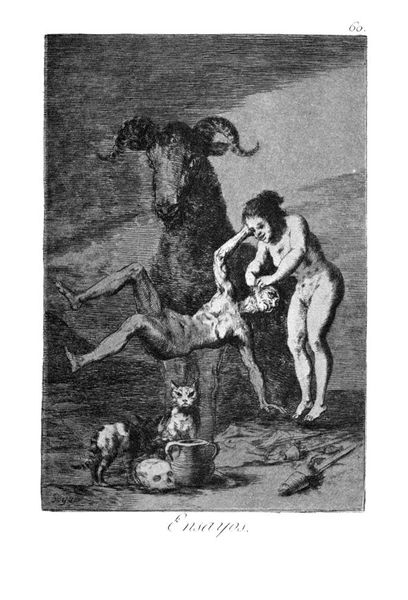
drawing
#
drawing
#
genre-painting
#
history-painting
#
academic-art
#
nude
#
erotic-art
Copyright: Public domain
Agostino Carracci made this engraving, Alcibiade and Glycere, at the end of the 16th century. It depicts a scene of classical antiquity, reimagined through the lens of the Italian Renaissance. Carracci’s image wasn't simply a neutral illustration; it was actively participating in a cultural conversation about sexuality, morality, and the legacy of classical antiquity. In the late Renaissance, the rediscovery of classical texts and art fueled a renewed interest in the human body. However, this enthusiasm was often tempered by the strictures of the Catholic Church. The print's success depended on the social networks that valued erudition and wit. To understand it fully, we need to consider the history of printmaking and the rise of a public sphere in which images could be circulated and debated. The cultural context in which such works were produced and consumed is crucial to our understanding of their meaning and impact.
Comments
No comments
Be the first to comment and join the conversation on the ultimate creative platform.
